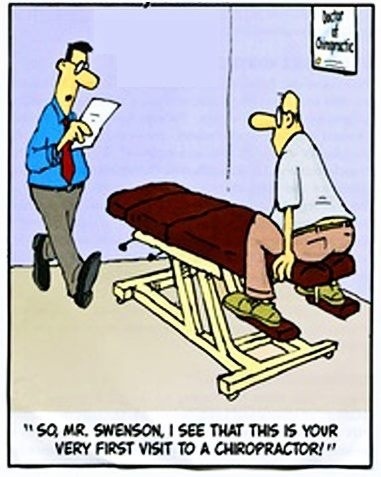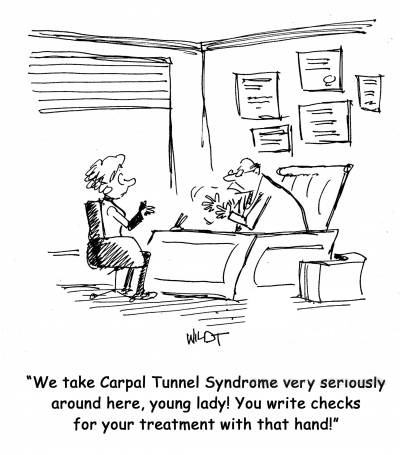
Chiropractic and pain management: we got your back!
September 19, 2015
Coccyx Dysfunction: your osteopath can help !
September 21, 2015
“We take Carpal Tunnel Syndrome very seriously around here, young lady! You write checks for your treatment with that hand!”
What is carpal tunnel: entrapment of the median nerve around the elbow or wrist, due to structural changes such as bony alignment, inflammation in the tendon or muscle (tendonitis), changes in the tendon structure (tendinosis/ thickening from overuse). It’s is very common in people who are typing or mousing from prolonged periods, or from overuse activities such as in hairdressers. The symptoms include pain, weakness in the hand or grip strength, inability to close hand and numbness in the second and third fingers.
How can chiropractic and rehabilitation help?
Although many opt for surgical release due to lack of pain management options from surgeons, the success rate of surgery is quite low due to scar tissue formation post surgery from cutting through the skin! fascia and muscle which is hypersensitive in such a small and delicate area.
Alternatively, chiropractic focuses on manually releasing adhesions, fibrous scar tissue that builds up due to overuse and restoring proper vascularity in the area. In combination with rehab exercises and physiotherapy such as dry needling, biomechanical changes will cause structural changes in the bones and tissues and de-load the tendon and tunnel. We also work on the whole chain such as the elbow, shoulder and neck since postural dysfunction can also exacerbate the problem. Many sedentary computer users tend to have upper cross syndrome where the shoulders are rounded, neck is strained and muscles are in spasm. Compression in other areas may contribute to carpal tunnel so it is up to the practitioner to determine the origin of the injury!
Other therapy options include splinting with a cock-up splint during prolonged activity and sleep and ergonomic changes at work with the keyboard and hand resting surface, inflammation will naturally reduce and the symptoms should disperse. The pros of this method: change is long term and the condition rarely comes back, there is no recovery time needed and no post-surgical scar tissue as well as it being more cost-effective!
Fascial release versus steroid injections: many people opt for a quick fix, cortisone steroid injunctions for symptomatic relief. We don’t recommend this unless the pain is intolerable. Even so, a course of anti inflammatory medications administered orally or local should be tried first as steroids can be detrimental to bone structure causing softening of the bone fibers. Steroid injections only reduce inflammation, but what if the problem is chronic and there is no inflammation in the tunnel? What if the pain is due to enlarged fibrotic tendons due to wear and tear? Manual therapy is much more effective in restoring this structure!
Can we apply the same principles for other nerve entrapment conditions?
Of course! There is always a cause of compression and restoring proper biomechanics is always the best solution.

